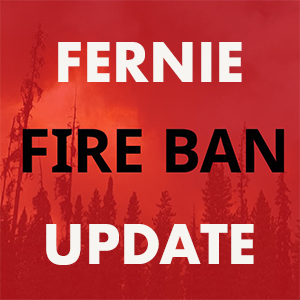The Kettle River and a remote northern area widely known as the “sacred headwaters,” both very popular among canoeists, have tied for top spot on British Columbia’s most endangered rivers list for 2010.

The Kettle River runs through BC’s southern interior near the towns of Midway, Rock Creek and Grand Forks. This river, already suffering from seasonal low flows and high water temperatures, is threatened by significant new water extraction proposals near its source. Unless greater efforts are made to address this issue, the fate of this beautiful interior stream and its fish stocks may well foreshadow what many other streams in the region will confront in the face of ongoing climate change.
“Most importantly, the issues unfolding on the Kettle highlight the urgency of updating BC’s outdated Water Act so as to ensure the needs of fish and river ecosystems are adequately considered before making decisions on water extraction for various industrial uses”, said Mark Angelo, Rivers Chair of the Outdoor Recreation Council and an Order of Canada recipient. The province is currently seeking public input on Water Act reform.
In a tie for top spot is the area widely known to the Iskut First Nation as the “sacred headwaters” in that it nurtures the source not only of the Skeena, but also the Nass and Stikine, all great salmon-bearing rivers. Located on the southern edge of BC’s Spatsizi wilderness, the sacred headwaters is home to an abundance of wildlife, including caribou, stone sheep, grizzly bears and wolves; to many, this area is the “Serengeti of Canada” said Angelo.
Yet, the sacred headwaters is also the site of a major proposal by Canada Shell to extract coal bed methane gas, a highly invasive process that would compromise the biological richness of the great rivers that flow from this area. If approved, a maze of wellheads, roads and pipelines would spread across the proponent’s 400,000 hectare tenure. Vast amounts of wastewater, high in salts and heavy metals, may also be generated in the extraction process. Current plans call for re-injecting this polluted water back into the ground but this is an untested method that could easily contaminate groundwater aquifers.
While a temporary moratorium on coal bed methane development in the sacred headwaters was implemented over a year ago, this is set to expire in December, at which point development could proceed. “There is widespread support for making this moratorium permanent, which would do much to protect the legacy of the great wild rivers that flow from this area”, said Angelo. Commercial coalbed methane development has never been attempted before in a wild salmon-bearing watershed and to many, the sacred headwaters are too important from an environmental and cultural perspective to expose to such a risk. “The threats confronting this area highlight the need to be more proactive in protecting our great northern salmon rivers”, added Angelo, who also chairs the Rivers Institute at BCIT.
Coming in at the number three position is the Coldwater River, which has been on several past endangered lists due to the impacts of low flows prompted by both drought conditions and excessive water extraction. Last summer, this resulted in at least one major fish kill affecting juvenile salmon, trout and whitefish. To date, voluntary water conservation measures have had only mixed success. “There are also increasing concerns about excessive groundwater extraction which often has a direct impact on surface flows, highlighting the need for greater regulation of this resource”, said Angelo. Presently, BC is the only province without legislation governing groundwater use.
In the fourth spot is the Fraser River, which for the 17th time in 18 years, finds its way into the top half of the endangered rivers list. “Of particular concern this year are the development pressures facing the ‘Heart of the Fraser’ between Hope and Mission, one of the most productive sections of river anywhere in the world”, said Angelo.
“As one scans this year’s list, the issues and problems outlined are extensive and diverse, ranging from the importance of pro-actively protecting productive salmon rivers and ensuring that adequate water management regulations are in place to the need for improved riverside habitat protection,” explains Angelo.
“The list also helps to create a greater awareness of the various threats that confront our waterways”, he added. “These issues highlight the fact that you cannot separate the health of our fish stocks from the health of our rivers; they are completely inter-dependent”.
Each year, the Outdoor Recreation Council solicits and reviews nominations for BC’s Most Endangered Rivers from its member groups, which total close to 100,000 members, as well as from the general public and resource managers from across BC.
For more detailed information on the rivers listed, please see the endangered rivers backgrounder at www.orcbc.ca
























